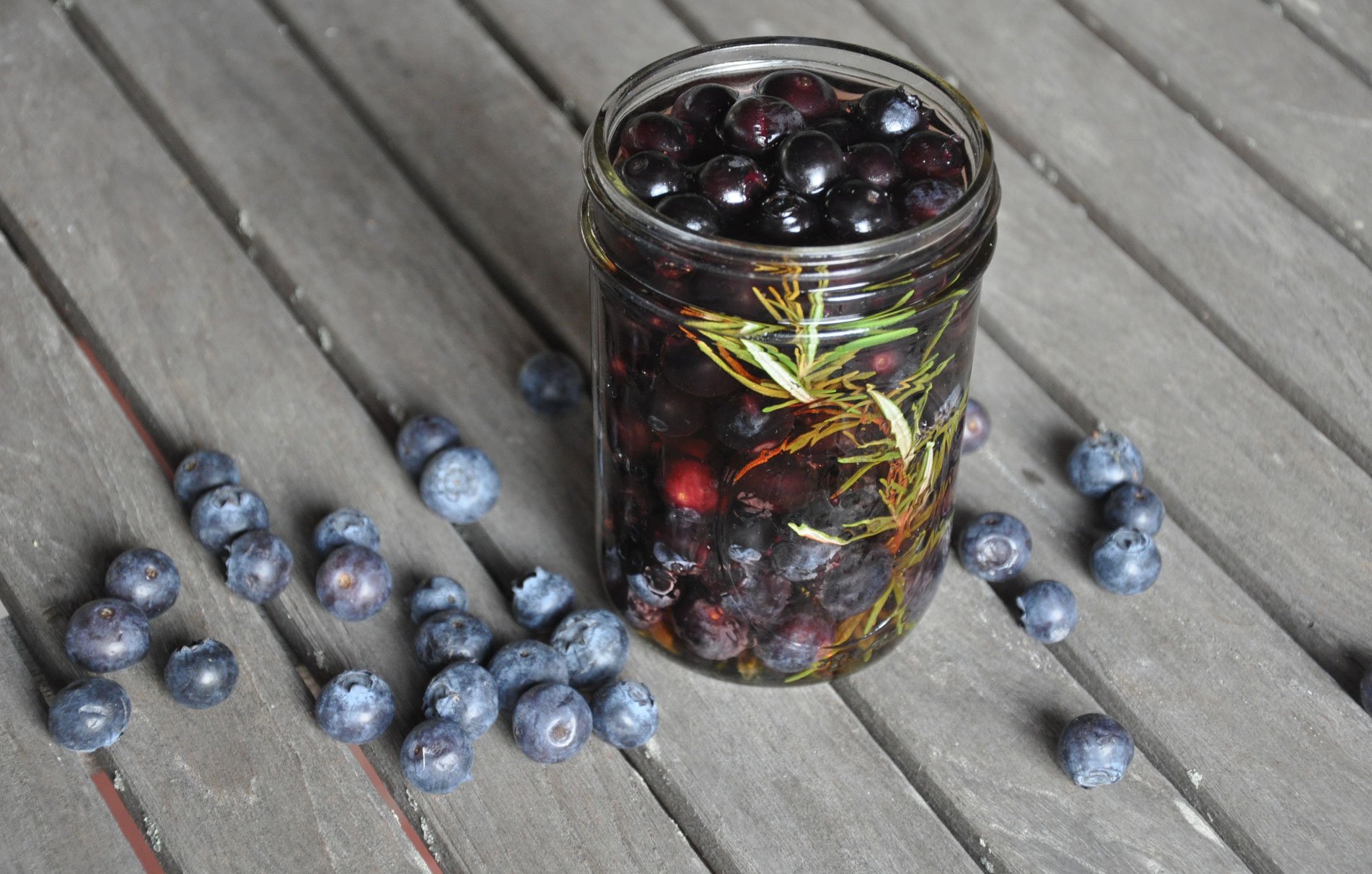Real Food Encyclopedia | Blackberries, Raspberries, Brambles
Botanically, brambles like blackberries belong to the Rubus genus, which is part of the rose family.
Derived from the Middle English world brembel, bramble refers to a prickly and/or thorny shrub, and in the United Kingdom, is used interchangeably with “blackberry.” In fact, “bramble jelly” is what Americans might call “blackberry jam.”
The brambly ties between the two countries are long and strong. The Evergreen blackberry, a UK native, arrived in Oregon sometime around 1850, the beginning of a long history of commercial cultivation in that state. (Oregon leads the US in commercial blackberry production.)
In addition to Britain and North America, blackberries are native to South America and parts of Asia. Wild blackberries, which include the Evergreen and the Himalayan (which incidentally is from Germany) grow like weeds and are considered an invasive species in the state of Washington. Such “weeds” are considered produce loot for local foragers.
Fun facts about brambles:
- The U.S. is number three in global commercial raspberry production, trailing Serbia and Russia. According to the USDA, Washington State leads the country in commercial production of red raspberries, followed closely by Oregon and California. Washington and California are also top blackberry-producing states.
- The modern bramble is a fascinating tangled web of cross-breeding experiments that have resulted in a multitude of raspberry and blackberry cultivars.
What to look for when buying brambles
Here are some of the more popular types:
- Dewberry: Looks like a raspberry but has the signature dark purple-black pigmentation of a blackberry.
- Loganberry: A cross between a blackberry and red raspberry that was discovered in 1881 by a California judge. Boasts a deep red color.
- Tayberry: Another blackberry-red raspberry cross, this cultivar was developed in 1979. Named after the Tay River in Scotland, it’s a cone-shaped variety in a shade of reddish-purple.
- Boysenberry: Blackberry meets red raspberry meets Loganberry, an unusual reddish-purple combination developed in the late 1920s by California grower Rudolf Boysen.
- Youngberry: Another triad cross, this time among raspberry, blackberry and dewberry. Named after grower Byrnes Young of Louisiana, who did berry tinkering in the early 1900s.
- Ollalieberry (pronounced Oh-lah-leh): A cross of Youngberry and Loganberry — a hybrid of hybrids — that was released in 1950. Olallie = “berry” in Chinook, a tribe with roots in Southwestern Washington.
- Marionberry: An Olallieberry-Chehalem blackberry cross developed in Marion County, Oregon, in the 1950s. In Oregon, you might refer to all blackberries as “Marionberries.”
- Salmonberry: The salmonberry is one of the more lesser-known brambles, quite similar to the raspberry. Salmonberries have been served for millennia in Indigenous American diets. Sadly for the majority of folks outside the Pacific Northwest, the berry has a very small growing region and thus has escaped cultivation; it is only foraged.
Sustainability of brambles
The west coast provides the lion’s share of commercially grown brambles, but in the winter, supermarket berries are shipped in from Mexico, Guatemala and as far as Chile, which adds considerably to their carbon footprint. It is worth freezing in-season brambles for those winter cravings.
Pesticides
Raspberries appear on the Environmental Working Group’s Shopper’s Guide to Pesticides in Produce for their pesticide load. In the Pacific Northwest, many brambles growers are not certified organic but do not spray their crops. Get as local as you can and ask the grower about their growing methods. At the supermarket, we recommend buying organic. You can also find organic brambles in the frozen section.
Seasonality
Brambles tend to be the fruit of peak summer, although in some parts of the country, there is a significant fall raspberry harvest.
Eating brambles
Storing
Brambles are extremely perishable and need to be eaten within a few days of purchase. They are susceptible to mold and spoilage and must be refrigerated immediately. Keep covered with a paper towel to minimize moisture. Do not wash until ready to use, and even then, do so gently, perhaps with a spray bottle. Pat dry.
Cooking
Brambles make stellar desserts, from cobbler to pie, parfait to frozen yogurt. They zip up pancake breakfasts and take fruit smoothie hour by storm.
Similarly, they do a great job in savory dishes, playing nicely on a cheese plate or as part of a salad (arugula is a wonderful partner). Basil loves teaming up with brambles; a few torn leaves takes a fruit salad to a sultry dimension.
Preserving
If you’re unable to eat within 48 hours, freeze your brambles: Place on a tray in a single layer and into the freezer. Once frozen, transfer the brambles to a plastic freezer bag. This will minimize clumpage.
Nutrition
Generally speaking, brambles offer numerous health benefits, from their fiber-rich, heart-healthy pectin to the disease-fighting antioxidants in their deeply colored pigments.
Weighing in at a mere 64 calories, one cup of raspberries contains more than half the RDA of Vitamin C and nearly eight grams of fiber. It is a good source of folate, potassium, Vitamin E and (news to this raspberry lover), those heart-healthy omega-3 fatty acids.
As for blackberries, they’re king in the antioxidant department. Scientists analyzed more than 1,100 samples of food from the USDA National Food and Nutrient Analysis program for antioxidant content (also known as ORAC levels). Of the 50 foods with the highest antioxidant content per serving, blackberries top the list. These findings, which were published in The American Journal of Clinical Nutrition in 2006, include raspberries at number seven.
There are about 60 calories in one cup of blackberries, which offers 50 percent of the RDA for Vitamin C and 30 percent for fiber. With their extraordinarily high level of polyphenols, the amazing antioxidants found in the pigments, blackberries are being studied for their ability to inhibit tumor growth.
The one caveat: Brambles are rich in oxalytes, which could be a problem for anyone with kidney or gallbladder issues. Consult your physician.
Top photo by carmogilev/Adobe Stock.


